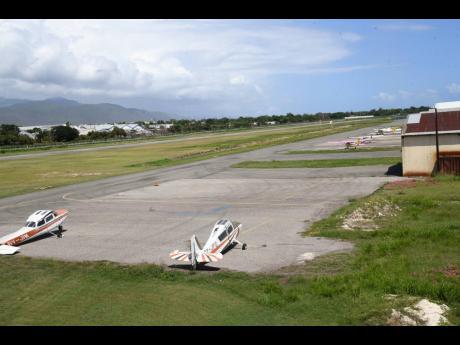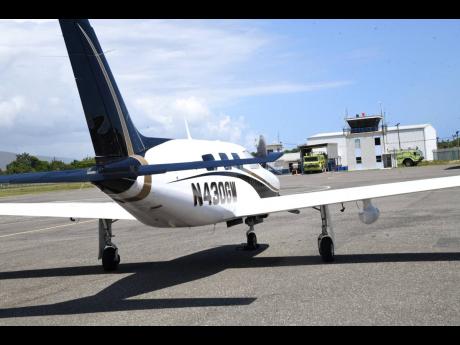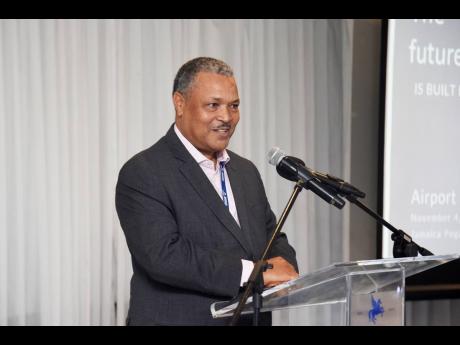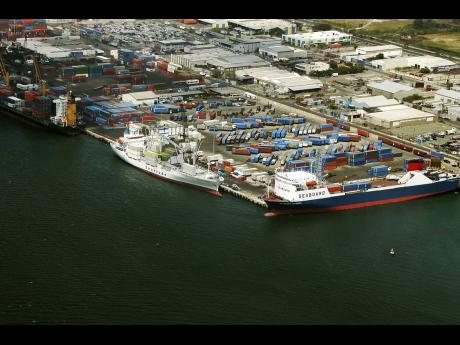Stakeholders urge Government to rethink relocating Tinson Pen Aerodrome
WESTERN BUREAU:
Prime Minister Andrew Holness’ announced plans to relocate the Tinson Pen Aerodrome, to expand cargo space for the country’s ports, has put stakeholders at the Marcus Garvey Drive, Kingston facility in a bind.
The Government’s plans come 17 years after the then opposition Jamaica Labour Party strongly opposed the closure of the same facility by the People’s National Party administration, claiming at the time that the move would take aviation in the reverse direction.
Today, investors, prospective financiers and stakeholders in the local aviation industry believe that view still holds true of Jamaica’s largest domestic airport, and are calling on the Government to realise the importance of Tinson Pen at its current location and reconsider its plans.
“It is a very unsavoury situation, and comes at a time when the local aviation industry, which is almost non-existent, is moving towards regaining its potential,” head of Jamaica Aviators Operators and Pilots Association (JAOPA), Captain Edward Miller, told The Sunday Gleaner last week.
In his Budget presentation earlier this year, Holness directed the Port Authority of Jamaica, the Airports Authority of Jamaica, and the National Works Agency to develop a comprehensive plan to enable the use of the Tinson Pen lands for more storage space and reduce congestion at the terminal.
“This will involve the transfer of operations of the Tinson Pen Aerodrome to the Norman Manley International Airport (NMIA). Marcus Garvey Drive would be realigned to run behind the Tinson Pen lands, releasing approximately 100 acres of land to be seamlessly incorporated into the curtilage of the port,” Holness stated in March.
But JAOPA said the high cost of operating at NMIA would be a nail in the coffin. Most importantly, the association said, is the serious concern of how to manage the separation of domestic and international traffic and the risks associated with mixing the two.
Miller also noted that Tinson Pen, with its capacity of receiving payloads from medium to large military aircraft, provides an important relief airport for aid if required and is an important hub in the event of natural disasters.
“Tinson Pen has always served as an alternative aerodrome in the event of natural disasters which may render NMIA unavailable. This has been demonstrated time after time by loss of access to NMIA due to flooding or blockage of the road,” Miller stated.
JAOPA’s position is similar to Mike Henry’s while he was opposition spokesman on transport. Henry, who is a member of parliament in the current government, was quoted in a Jamaica Observer article in 2006 cautioning and reminding the leaders of the day about the prolonged closure of the NMIA as a result of hurricane damage to the Palisadoes Road network.
“The need for the Tinson Pen facility in the event of any similar disaster in the future is quite obvious,” Henry said then.
HIGH REPLACEMENT COST
According to Miller, the replacement cost to private operators and owners at Tinson Pen would be in excess of $1 billion. The facility houses offices, classrooms, 11 aircraft hangars, along with the Terminal building that includes the Airports Authority of Jamaica administrative offices, a recently installed pilot lounge, and plans are under way to construct an area for a flight school.
“It goes without saying that the loss of those buildings would deliver a crippling blow to the aviation community, particularly at a time when earnest efforts are being made to revive the industry,” said Miller.
The announced relocation, he said, has also stalled investment that was in motion. “This has weakened investor confidence as we wait for some official word,” JAOPA noted.
Currently, more than 200 persons are directly employed at Tinson Pen. In addition, there are over 150 students enrolled in flight and maintenance training there.
“Today, for persons pursuing a career in aviation, the only currently viable option is to migrate, resulting in the continuation of the brain drain that Jamaica as a country endures,” Miller said.
The obvious jobs that have disappeared from the country include pilots, flight attendants, aircraft engineers, dispatchers, load masters, crew schedulers, as well as safety, security and training departments, he noted.
“Certain job functions such as gate agents are transferable to other non-Jamaican operators, but all the other jobs are lost from the Jamaican job market,” exclaimed Miller.
At its heights in the 1990s through to the early 2000s, the aviation industry employed well over 3,000 persons.
JAOPA noted that today, Jamaica is solely dependent on overseas airlift, not only for passenger lift, but cargo as well.
“The industry is totally dependent on airlift for survivability and thus are vulnerable if there is any meaningful change in our geo/social/political positions. Admittedly, that risk is low but nonetheless must be recognised,” JAOPA’s airline operators and pilots echoed.
UNTAPPED POTENTIAL
JAOPA is calling on the Government to give a helping hand to the local aviation industry as stakeholders attempt to revive it, especially in the face of the numerous challenges it is experiencing. Among them, the absence of long-term stability, inconsistent guidelines, inability to secure long-term leases and the high insurance cost due to regulatory requirements that are not in line with international standards.
Proper regulations would allow their companies to effectively compete in the global market while protecting safe operations. They are also calling for a review of the fee structures.
Miller and his group are touting the untapped potential of local aviation, noting that the 60-odd-year-old Tinson Pen is coming from a total of 67,495 passengers in 2004, falling to 8,950 in 2010 and an all-time low of 240 in 2018. This fall in traffic, the JAOPA head said, is driven by numerous external forces, some predictable and controllable.
Despite the challenges, however, there is a concerted drive by the stakeholders to revive domestic aviation and realise the latent untapped potential.
“It is our strong and ardent belief that once these factors are understood and the potentials identified, and a studied projection completed of the positive impact on Jamaica’s economy, it would virtually be impossible for the powers-that-be to ignore,” Miller stated.
Audley Deidrick, head of Airports Authority of Jamaica, said Tinson Pen’s relocation requires significant planning.
“The plan is to be developed by all the three agencies involved – PAJ, AAJ and NWA. We have not yet met. This whole matter needs to go into a planning process, let alone decision and implementation,” Deidrick told The Sunday Gleaner last week, promising an update once the stakeholders meet.
The meeting is set to take place this Wednesday, April 26.
ONE-SIZE-FITS-ALL APPROACH
Jamaica’s first domestic aerodrome was built in the 1960s. Tinson Pen was extended to accommodate commuter traffic in the late ‘60s, and a taxiway was added in the early ‘70s to make it more user-friendly.
Jamaica Air Service was the original service provider there, connecting it to Ken Jones, Boscobel, Negril and Montego Bay. There were also approximately 50 private airstrips in Jamaica that made travel to almost every corner of the island accessible by air taxi.
The Aviation Act resulted in the closure of many of the private airstrips in the ‘70s, which began the contraction of domestic air travel.
This and other pieces of legislation, bemoaned JAOPA, was introduced as a one-size-fits-all approach to aviation, imposing stringent and restrictive airline standards on small operators.
“The many challenges have been brought to the attention of the authorities for almost 25 years, but there is either a disinterest in fixing the problems, or a void of knowledge and expertise to do what needs to be done,” Miller stated.






